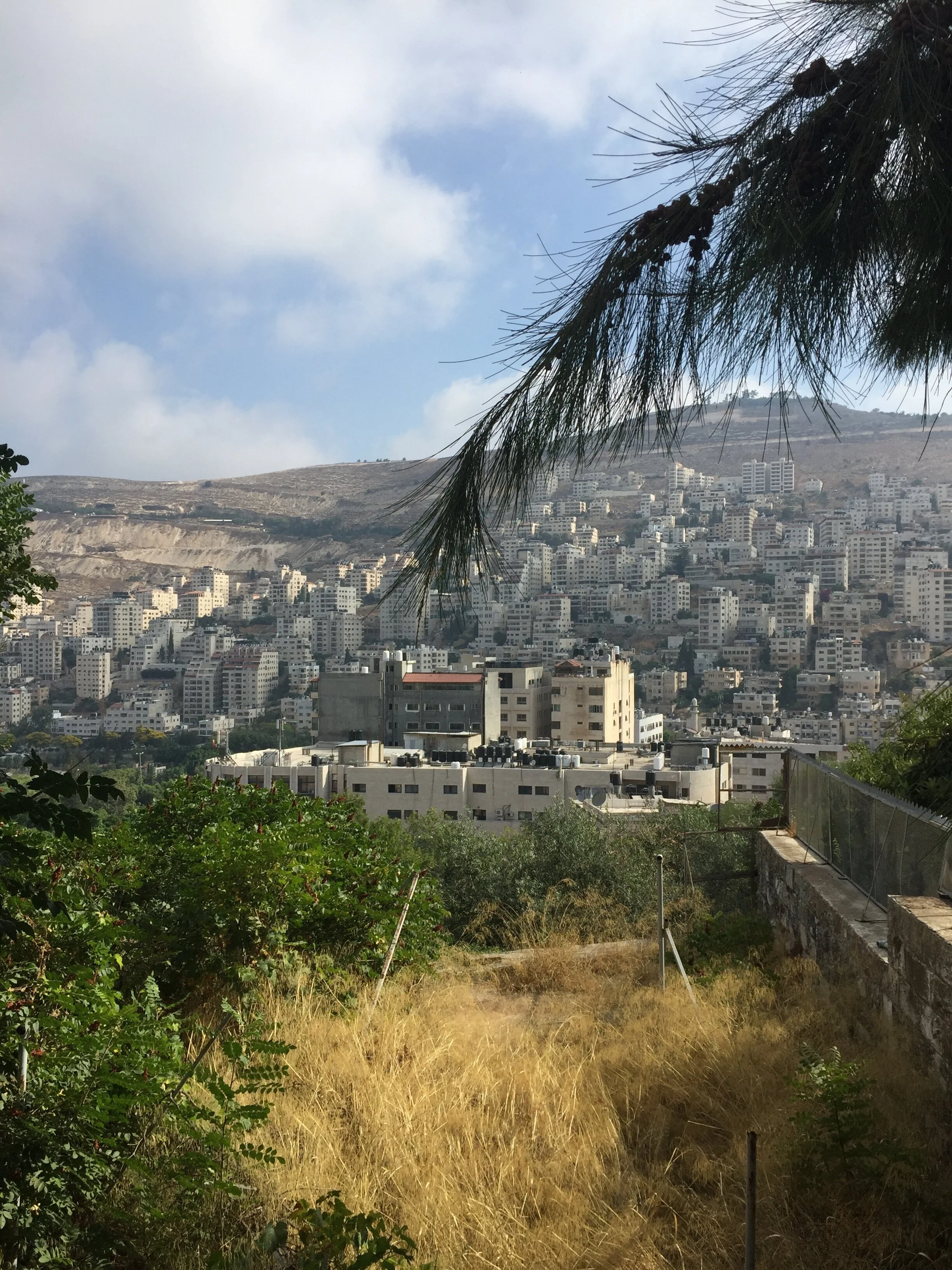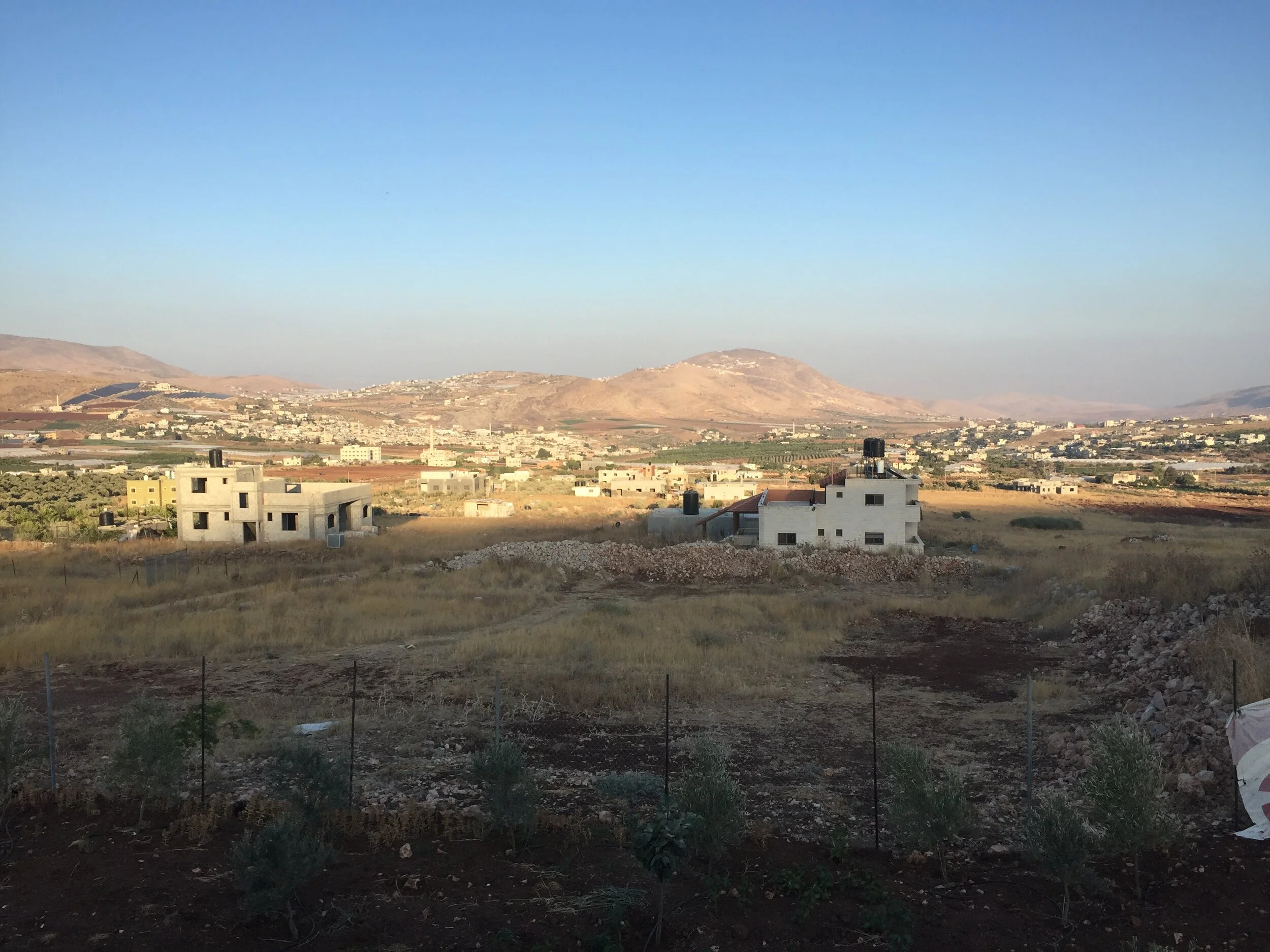Suspicion in the eye of the beholder
THE TRAVEL DIARY OF A HISTORY UNDERGRADUATE IN ISRAEL AND PALESTINE
 As a second-year university student in 2019 I was awarded a scholarship to visit Palestine for the month of August while I learnt Arabic and volunteered in Nablus. I used the opportunity to explore the beautiful countryside and cityscapes of Israel and Palestine, and to integrate myself with the people who lived there as much as possible. During my trip I tried to be impartial and observe the undercurrents running between the two populations, but I couldn’t help but be caught up in these riptides as well.
As a second-year university student in 2019 I was awarded a scholarship to visit Palestine for the month of August while I learnt Arabic and volunteered in Nablus. I used the opportunity to explore the beautiful countryside and cityscapes of Israel and Palestine, and to integrate myself with the people who lived there as much as possible. During my trip I tried to be impartial and observe the undercurrents running between the two populations, but I couldn’t help but be caught up in these riptides as well.
With no queues early in the morning at Manchester airport, I glided through security but felt a prickle of panic as I struggled to find my passport. Relief washed over me as I found the worn burgundy cover. To kill time I bought a cup of tea and sat in front of the departures board… Palma… Doha… Reykjavik… Alicante… I watched the waves of people moving through the airport. The bubbles of excitement flurried through the terminal as travelers clasped their panic-bought sun cream, crisp linen paperback books ready to be broken into, slick black rollers and crusty backpacks. Time crawled by and my grey tea steamed in the paper cup as I waited for my flight number to echo through the terminal.
As I moved towards the gate I tried to slow the drumroll of thoughts in my head. The guard took my passport and I gazed down the connecting tunnel at the passengers bobbed and weaved through the cabin.
When I began to move forward, it became clear that there was a problem. The guard kept a firm grip on my passport and asked me to come with him. This must be a mistake, I thought. I haven’t done anything wrong, why would he want to search me? I was led to a small grey square space, made up of insulated propped-up walls. My suitcase was splayed open on a table and the 8 guards crowded into the room watching the x-ray machine. Flashes of Tampax could be seen stuffed between my underwear and toiletries. Two women ask me to take my clothes, shoes, and socks off while they search me and the bag again. As I stood in my underwear, panic began to wash up my body from the soles of my feet. It prickled and burnt my skin as I incessantly asked myself: but why are they suspicious of me?
Over the next half an hour I felt as if everything I had ever done, anyone I had ever met, everywhere I had ever been, came under scrutiny. The more questions they asked the more hesitant and stumbling my answers became. The stream of questions rallied through my brain. What do they see in me that’s suspicious? What are they looking for in my toiletries bag? What is the right answer to his questions? Is there a right answer? What do they want me to say so I can get out of this grey padded cave? Slowly my anxiety and humiliation turned into anger and annoyance. As they became more suspicious of me, I became more suspicious of them.

Once I was seated on the plane, I stared out of the oval of glass onto the slick tarmac and thought about why that half hour had left me feeling so injured. They were doing their job. It was a normal procedure that people go through every day, but it was being taken as suspicious which had affected me the most. I didn’t realise at the time how much my experience was coloured by my suspicion of others. Only through observing the suspicion others felt towards each other would I realize I was also part of the conflict narrative.
***
After arriving in Tel Aviv I travelled by car to Nablus, a city in the heart of the West Bank, known for its kanafeh, oak coloured soap, and olive oil. Nablus is surrounded by permanent and ‘flying’ military checkpoints, Jewish settlements, and an Israeli army base. During the day, the green stubbled hills formed waves around the city, with the grey metal buildings crowning the upsurging earth.
Every so often, trucks laden with soldiers would venture down into the town, like ants scuttling down their mound into the hive of activity. The army base’s sprawling building squatted low and wide next to a rippling Palestinian flag. The gentle movement of the flag contrasted with the clamour of horns in the city below; its undulating cloth never sagged under the exhausting heat of the sun. At night I could hear the clamour of noise from the town centre; the horns arguing with one another, the wind whipping at each other’s heels, the fireworks competing to see which could be the brightest and most dazzling. And I could see the bright white lights of the base forming a constellation that winked through the curtain as I fell asleep. As the city fell into darkness and began to rest its eye lids I knew there was someone watching me as I slept. I felt monitored, visible, vulnerable.

As I walked through the old city walls, I was totally absorbed by what I saw: rusted bike frames, blue plastic tables and chairs outside cafes, bulging ruby tomatoes, silver sprouting onions and windowsills and doorways tempting your curiosity. A blend of years of shrapnel, brick dust, feathers, burnt paper, and ash formed a covering over the market floor. Within the old city walls there were endless combinations of old and new: parched oven-baked bread wrapped in blue plastic bags; beautifully tiled Hammamm’s with cigarette machines and plastic arsenal ashtrays; crusting terracotta walls scratched with pink graffiti; beautiful clothed dolls resting next to plastic toy AK47s.
Militarisation was apparent everywhere I looked, from the armed vehicles littering the highways to the abandoned checkpoints or roadblocks. The omnipresence of everyday security practices made me alert to the fact that they/we were being intensely monitored. It inspired the feeling that I had done something wrong, that someone else had deemed me untrustworthy and in need of being kept under the looking glass. For the Israeli government, the Palestinian population is a threat to the survival of their state. Palestinians hold the power of possibility: of what they could do; of what they could become; of who they could threaten.
***
My experience in Nablus starkly contrasted with a trip from the Negev desert back to Tel Aviv, with a lovely Israeli couple who offered me a lift. The car smelt of pine, clean rubber, and fresh plastic. I was sitting in the backseat, conscious of my own lingering smell of dust and sweat; trying to touch as little as I could with my crusted shoes. As they drove the rental car, I took in the view of sandy wrinkles unfolding out in all directions and the dusty plumes which mushroomed out behind us.
In the front seat were Alon and Livnat, both in their early thirties. As I talked to them they asked what I had been doing here. For a minute I thought of lying to them, but then I decided against it and explained that I had been in Palestine. Immediately, curiosity, not the anticipated anger, sprung from the front seat. What’s it like over there? Where did you go? Do they hate us?
What is interesting to me is this double layer of suspicion: the suspicion that one automatically hates the other. The belief that this hatred is something bred in the bones of these communities and passed down from generation to generation, like a weighted backpack becoming more cumbersome with each passing era. This assumption feeds popular skepticism and wariness of the ‘other’. It drives the wedge further between Israelis and Palestinians, hindering reconciliation and recognizing one another as equals.

Fear and suspicion of the ‘other’ are like the layers of dust that coat the old town market. They colour the way people see, perceive, and relate to one another; they darken and twist the reality that I experienced. The Israeli soldiers’ mistrust of the Palestinians made the Nablisi citizens more sceptical of them in return. The Israeli couple, conditioned by years of conflict, assumed that both communities were irreparably divided and that purely by ethnic association they were hated by the Palestinian-Arab population. The resentment and anger I felt towards the air stewards because I felt they were suspicious of me, despite the fact that it was their job to have such a mentality. This lens of suspicion feeds the preconceived notions that both sides have of the other. It forms the gnarling barbed wire of the 250km separation wall, violently dividing the two sides.
So what if change started with the everyday interactions, with the seedlings of conversation and rhetoric and suspicion? Some may argue that these changes are too microscopic and mundane, but it must start with popular opinion and real lived experience. They may not be the only factors in such a complex conversation but only by sweeping the dust from the windowsills and doorways in old market towns will there be a chance to create a future where there can be trust and recognition and peace.
Rosie Hoddinott is a researcher and staff writer at Parallel Histories and helps to manage the organisation’s presence in London by arranging and co-ordinating events, debates and discussions.
